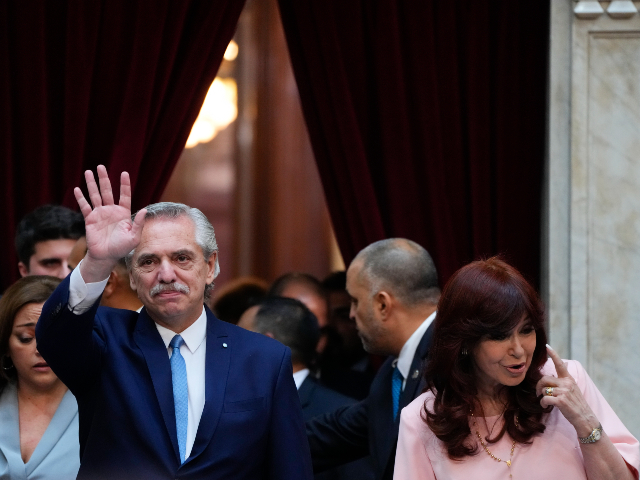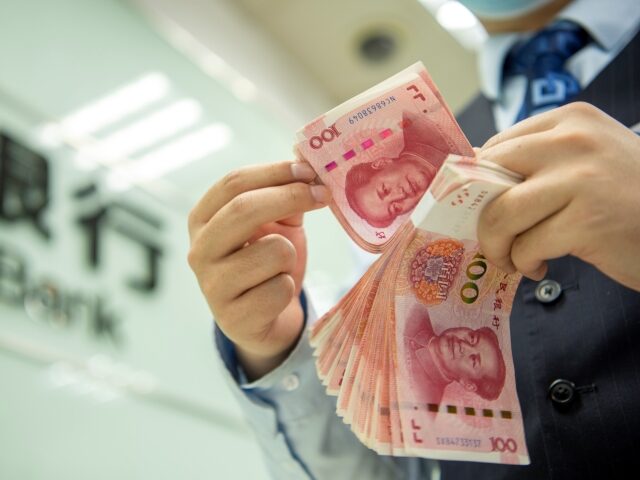China spent $240 billion between 2000 and 2021 to “rescue” 22 countries struggling to repay predatory Belt and Road Initiative (BRI) loans, according to a report published on Tuesday.
The report, titled “China as an International Lender of Last Resort,” was prepared by researchers from the World Bank, the Harvard Kennedy School, research lab AidData, and the Kiel Institute for the World Economy. The data show that, by 2021, China had undertaken 128 rescue loan operations spread across 22 countries with low foreign exchange reserve levels and weak sovereign credit ratings totaling $240 billion.
According to the researchers, China’s bailout “rescue” packages are provided with the ultimate intention to rescue its own banks, noting that the borrowed Chinese money is not “cheap,” as it comes attached with a five-percent interest rate that is much higher than the International Monetary Fund (IMF)’s two-percent rate.
“Beijing is ultimately trying to rescue its own banks. That’s why it has gotten into the risky business of international bailout lending,” Carmen Reinhart, one of the study’s authors, said. “But if you are going to bail out a borrower that is in default or teetering on the edge of default, it’s important to have a clear understanding of whether you are trying to solve a short-term liquidity problem or a long-term solvency problem.”
Recipient countries of the Chinese bailout money are “almost exclusively” Belt and Road Initiative debtors. The Belt and Road Initiative is a global infrastructure plan in which China offers predatory “debt trap” loans to poor countries to be used in the construction of infrastructure.
The report noted that China’s spending on Belt and Road infrastructure projects has slowed significantly since 2016, as many projects have failed to yield expected dividends.
Of the total $240 billion, $170 billion came from the People’s Bank of China (PBOC) swap lines, while Chinese state-owned banks and enterprises distributed the remaining $70 billion through bridge loans or balance of payments support. The study’s data show that rollovers of both kinds of loans totaled $140 billion.
The researchers found that Chinese loans to debt-laden countries took up as much as 60 percent of its overseas lending portfolio in 2022, up from less than five percent in 2010. Of the “rescue” funds, 80 percent was reportedly distributed between 2016 and 2021 to middle-income countries, presumably in response to the risk those countries posed to Chinese banks’ balance sheets. Low income countries were reportedly offered grace periods and maturity extensions.
Argentina received more money than any of the 22 countries identified as taking “rescue” funds. According to the study’s data, Argentina received $111.8 billion. Pakistan came in second place with $48.5 billion and Egypt in third with $15.6 billion.
Argentina, under the leftist presidency of Alberto Fernández, has increasingly become more dependent on China, officially joining the BRI program in February 2022.

Argentine President Alberto Fernandez waves as he arrives to the Congress to address the nation March 1, 2023. (AP Photo/Natacha Pisarenko)
Recent reports indicate that China has significantly increased its pressure on the Argentine government, seeking to take advantage of the South American nation’s current dire economic and social distress to control some of its key strategic sectors. Among the most vulnerable are Argentina’s energy generation sector and the management of the country’s canals and navigable rivers — which, if controlled, would grant the communist regime leverage over a large part of the grain trade in South America.
The Chinese lending study published on Tuesday suggested that beneficiary countries’ central banks may use unreported People’s Bank of China swap lines to artificially inflate their headline foreign reserve numbers.
“If a borrower can use PBOC swap line drawings to repay dollar and euro-denominated debts, then such drawings may be especially useful during a balance of payments or debt crisis,” an AidData article analyzing the results of the study read. “However, if a borrower can only use the RMB liquidity from its PBOC swap line as ‘window dressing’ to bolster gross foreign exchange reserves, then its net reserve position and ability to service dollar — and euro-denominated debt remains unchanged.”
“Much more research is needed to measure the impacts of China’s rescue loans—in particular, the large swap lines administered by the PBOC,” said Brad Parks, a co-author of the study, who described China’s lending system as “opaque and uncoordinated.”
“Beijing has created a new global system for cross-border rescue lending, but it has done so in an opaque and uncoordinated way,” Parks continued. “Its strictly bilateral approach has made it more difficult to coordinate the activities of all major emergency lenders, which is concerning because sovereign debt crisis resolution usually requires some level of inter-creditor coordination.”
China responded to the report’s criticism, claiming that its overseas investments operate on “the principle of openness and transparency.”
“China acts in accordance with the laws of the market and international rules and respects the will of others,” Chinese Foreign Ministry spokeswoman Mao Ning said at a news conference on Tuesday. “We never force others to borrow from us or forcibly ask any country for debt repayment. We never attach any political strings to loan agreements, or seek any selfish political interests.”
Christian K. Caruzo is a Venezuelan writer and documents life under socialism. You can follow him on Twitter here.

COMMENTS
Please let us know if you're having issues with commenting.